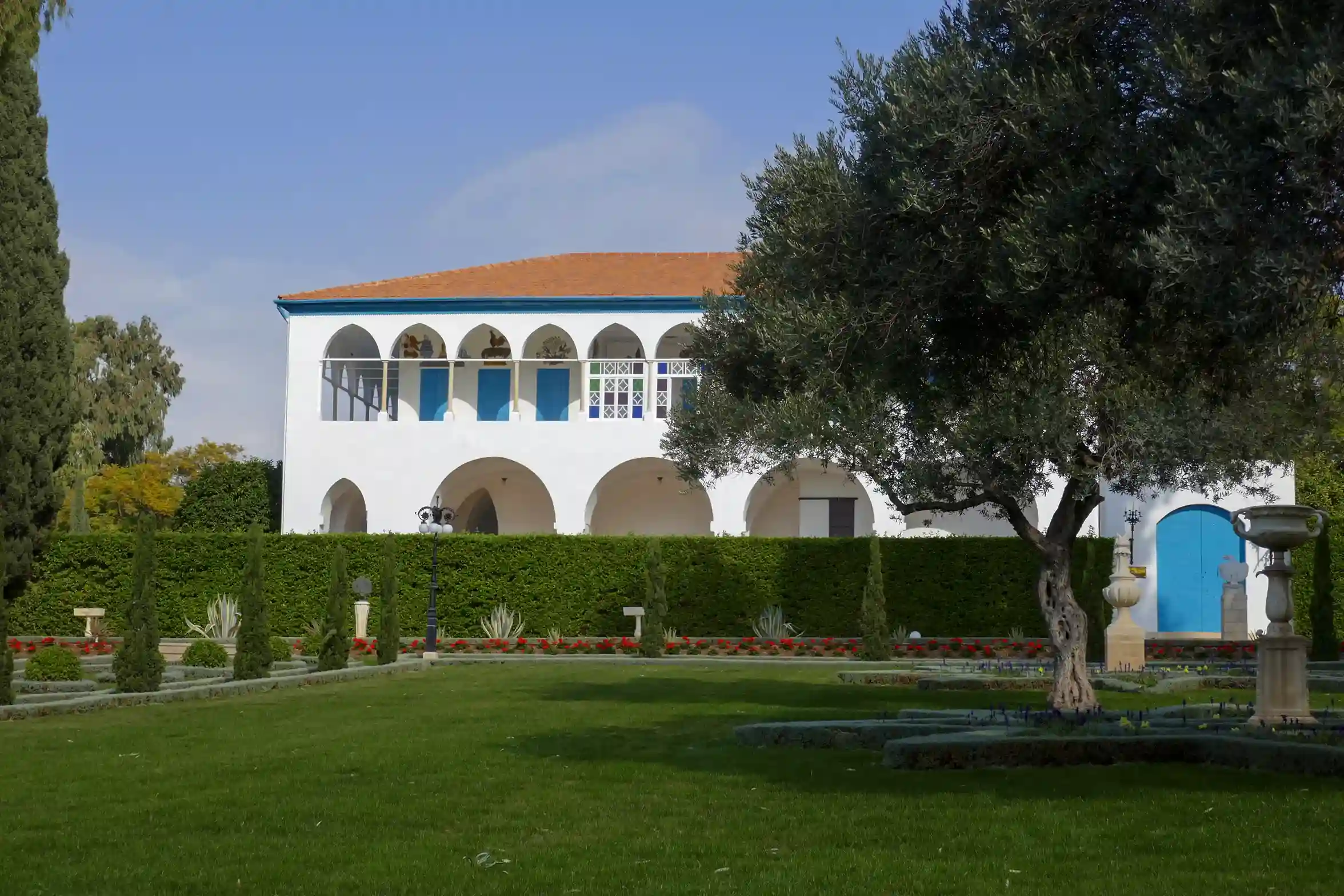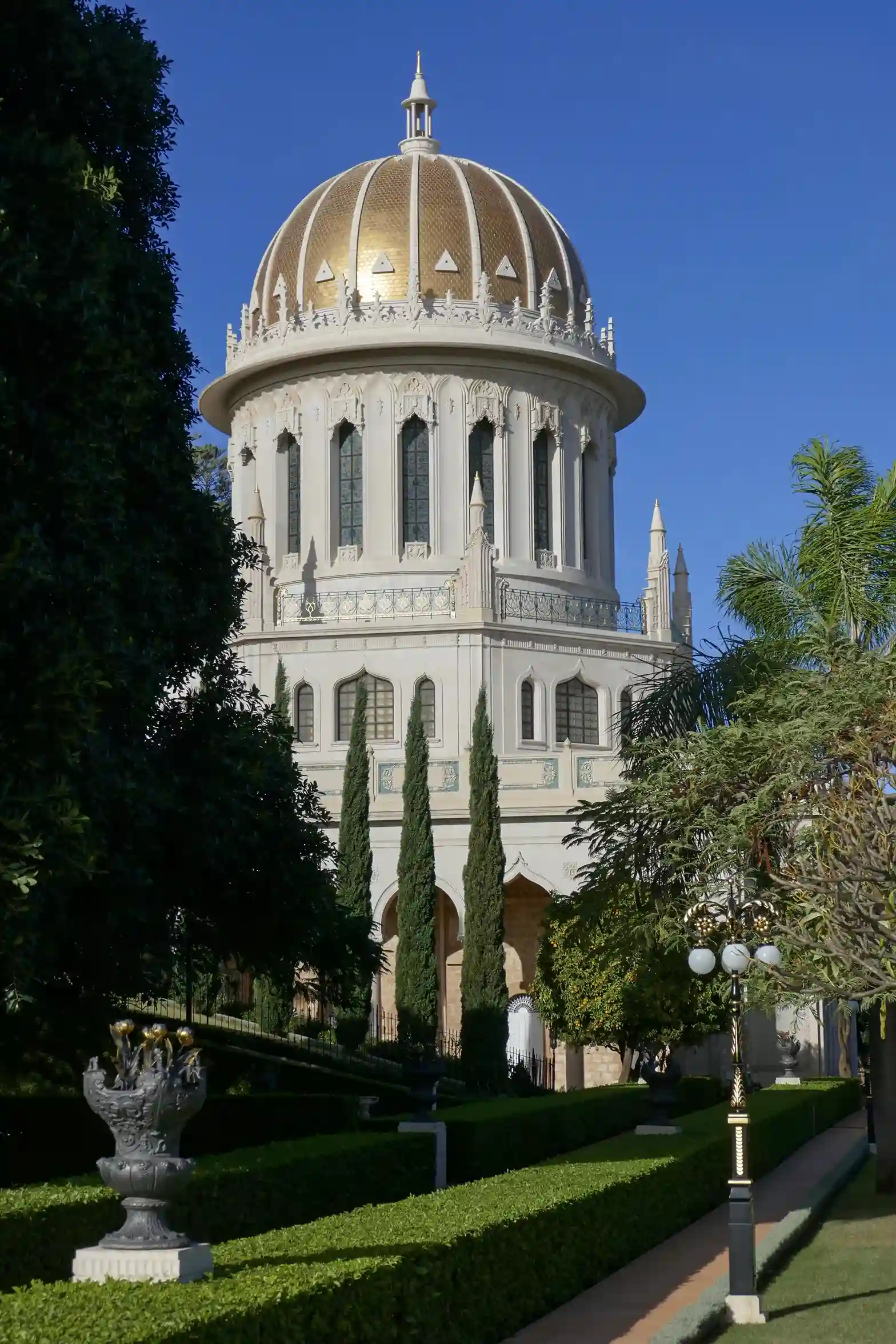Bahá’í Holy Places
The Bahá'í Holy Places in Israel, encompassing the Shrine of Bahá'u'lláh in Acre and the Shrine of the Báb in Haifa, are the spiritual heart of the Bahá'í Faith, a monotheistic religion founded in 19th-century Persia. These sites, inscribed as a UNESCO World Heritage Site in 2008 for their "outstanding universal value" and testimony to the Bahá'í pilgrimage tradition, draw thousands of pilgrims annually, serving as focal points for prayer, meditation, and unity.
The Shrine of Bahá'u'lláh, located in Bahjí near Acre, is the holiest site for Bahá'ís, housing the remains of Bahá'u'lláh (1817–1892), the faith's founder. Exiled from Persia, Bahá'u'lláh was imprisoned in Acre by the Ottoman Empire in 1868. After his release, he resided in the Mansion of Bahjí, where he died in 1892. His burial site, adjacent to the mansion, became the Shrine of Bahá'u'lláh, designated as the Qiblih, the direction Bahá'ís face during obligatory prayers. The shrine's central room features a small tree-filled garden, Persian rugs, and a glass roof added post-1892, with Bahá'u'lláh's remains in a northwest corner chamber. Surrounded by the Haram-i-Aqdas gardens, the shrine is a serene space for quiet reflection, where pilgrims recite the Tablet of Visitation. Its history includes a brief seizure by dissenters in 1922, resolved when keys were returned to Shoghi Effendi, Bahá'u'lláh's great-grandson.
The Shrine of the Báb, on Mount Carmel in Haifa, is the faith's second holiest site, entombing the Báb (1819–1850), the prophet-herald who foretold Bahá'u'lláh's coming. The Báb's remains, hidden for decades after his execution in Persia, were interred in a six-room mausoleum in 1909, as directed by Bahá'u'lláh to his son 'Abdu'l-Bahá. Completed in 1953 under Shoghi Effendi, the shrine features a golden dome, rose granite colonnades, and Chiampo stone arches, blending Eastern and Western architectural styles. Its nine-sided design symbolizes the unity of major world religions. The shrine is set within 19 terraced gardens, inaugurated in 2001, which cascade down Mount Carmel, attracting over ten million visitors since. Pilgrims and tourists alike visit for its luminous beauty and meditative ambiance, though no ceremonies are held inside.
Both shrines are central to the Bahá'í nine-day pilgrimage, open only to Bahá'ís and their spouses, with a cap of 500 visitors at a time due to space constraints. Pilgrims pray and meditate, fulfilling a spiritual obligation outlined in Bahá'u'lláh's Kitáb-i-Aqdas, though pilgrimage to other designated sites (inaccessible in Iraq and Iran) remains unfulfilled. The sites' significance lies in their association with the faith's founders and their role in fostering global unity, reflecting Bahá'í beliefs in one God and the oneness of humanity. Despite no formal Bahá'í community in Israel, the shrines welcome millions, embodying a universal call to peace and spiritual connection.

Martin Gray is a cultural anthropologist, writer and photographer specializing in the study of pilgrimage traditions and sacred sites around the world. During a 40 year period he has visited more than 2000 pilgrimage places in 160 countries. The World Pilgrimage Guide at sacredsites.com is the most comprehensive source of information on this subject.



